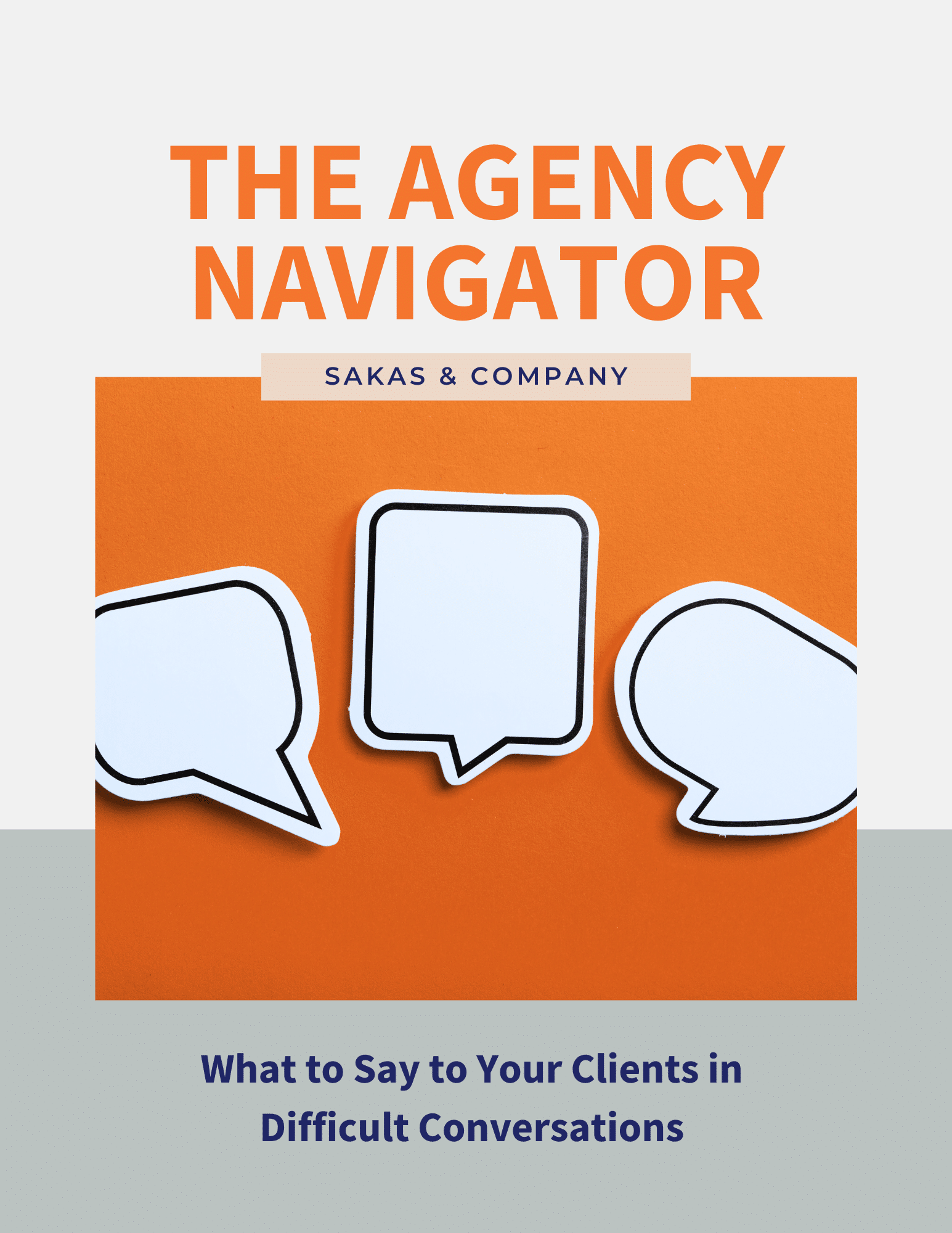Clients have recently shared a common concern—they’re worried about wasting time on bad sales leads at their agency. The solution is to get better at qualifying your sales leads up front.
You do that by building a sales intake process—and you do that by asking and stating the right things from the beginning.
As you develop your agency’s sales intake process, here are five factors to consider—and then apply.
1) Attitude: “Friendly yet exclusive”
I recommend an approach I call “friendly yet exclusive.” That is, you’re glad to see if there’s a match—friendly—but you’ll only work with people who are a good match for you—exclusive.
You can use a different approach—be sure it fits your agency’s culture and positioning—but I like that friendly-yet-exclusive lets agencies find a balance between being helpful and taking care of themselves.
2) Marketing that attracts and repels
The right kind of exclusivity starts with your marketing—especially your website and social media profiles. Are you making it clear who’s your ideal client? Are you producing content designed to attract that ideal target and repel prospects who aren’t?
A client noted that his agency’s former office created a lot of problems for him—it “attracted half the wrong clients and repelled half the right clients.”
The two most obvious places to look are your self-descriptions—what does your agency say it does, and for whom—and your case studies or portfolio—do you feature only the types of clients you want more of?
3) The right contact process
How do you encourage prospects to get in touch? Some prospects prefer phone; others prefer email—either is fine, depending on what works best for you. At a minimum, though, I recommend putting qualifying factors on your contact page.
Your goal is for people to see who’s a match—so that poor fits are less likely to contact you in the first place, and so that you encourage great fits to move forward.
If you offer a contact form—a good idea, even if not everyone will use it—consider the right questions to ask.
Instead of asking, “What’s your budget?” at this point, I recommend asking, “Do you have a budget yet?” People feel safer answering that second question—but the answer is almost as useful. If someone doesn’t have a budget yet, they’re shopping around, and you can temper your response.
At a previous agency, we’d hear from lots of people with small budgets. I fixed that by updating our sales contact form—at the top, we now noted that our minimum budget was $75,000. Overnight, small-budget leads disappeared.
4) Followups that narrow the funnel
When someone reaches out, the next step is to learn more about their situation. Instead of asking prospects, “What do you need?” you should ask, “What challenges are you facing?”
The first question invites clients to prescribe their own solution. This turns your agency into an order-taker, which isn’t good. A variation on the second question invites clients to share their symptoms, so you can start helping them diagnose the solution.
To be clear, you’re not sharing an actual solution at this point—you need to get paid first for that—but you can start evaluating if there’s a fit.
Use your sales intake process to guide people through what happens next. For example, say you get a sales inquiry through your contact form. Here’s an email template to consider for your response:
SUBJECT: Helping ABC Client via XYZ Agency
Hi Bob,
Thanks for reaching out! You mentioned needing help with online marketing for your 6-year old ecommerce site, which sounds like a potential match. I like what you’re doing with your current cross-sell process.
XYZ’s specialty is digital marketing for B2C ecommerce sites that produce at least $2 million a year in revenue, typically on agency budgets ranging from $3,500 to $10,000+ a month.
If that range is in line with your situation, please confirm—I’ll send a calendar link to set up a call to learn more about your goals. And if it’s not a match, let me know and I’m glad to recommend a trusted partner that might be a better match in your budget range.
Looking forward to hearing from you!
Rebecca
Clients want to feel like you have things under control. A key way to do that is for them to feel like you’re not just “winging it” during the sales process.
Importantly, that email template requires clients to “opt-in” to your budget range. If they’ve seen your budget minimums twice (on your website and in the email)—and the followup phone call is conditional on their being in the range—you practically eliminate the risk of your later creating a proposal that gets a “we don’t have enough budget for that” response.
You can do this by phone, too—describe your process and ranges, and ask if they’d like to proceed to a followup call about their specific goals.
5) Qualifying call that produces “fast failure”
In pharmaceutical development, drug companies seek what they call “fast failure”—if a drug ultimately isn’t going to work, they want to know ASAP so they can pull the plug before they spend more money on R&D.
As an agency leader, you—or your salesperson—should be doing the same thing with prospects. If they’re not a match, you want to know ASAP so you can point them elsewhere—and stop investing further time on a poor fit.
The qualifying call—your call after the initial email exchange pre-screen call—is your chance to apply “fast failure” in an agency setting.
The exact questions will vary by agency, but consider asking a variation of these three:
- How did you get into this business? (The goal is to build rapport, while establishing their motivation—so you can tailor your pitch.)
- Why us, and why now? (So you assess if their selection process should have led them to you—and to get a sense of how many other agencies are involved.)
- What are your future goals? (So you can confirm if their business expectations are reasonable.)
Here’s my 12-point checklist of more sales qualifying questions to consider.
I always frame those initial calls as:
“I’d like to learn more about what you’re running into. Based on that, I can share if it sounds like I’m a match. If so, I can recommend next steps. If not, that’s fine—I’m glad to recommend someone who’s a better fit for you.”
Remember—“friendly yet exclusive.”
Applying this at your agency
You won’t see results if you don’t apply the things I’ve mentioned here. Choose to improve one of the five in the next week, and then adjust from there.
Worried that you aren’t getting enough leads already? Check my list of 50 ways for agencies to get sales leads. But more broadly, you likely need to get your self-marketing in order—please get in touch.
Question: What’s the first thing you’ll change about your prospect intake process?


